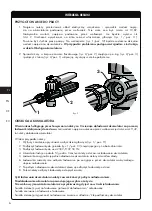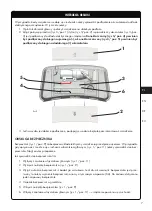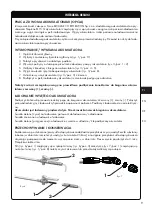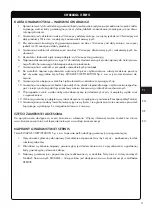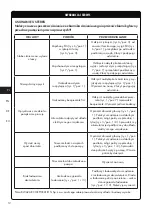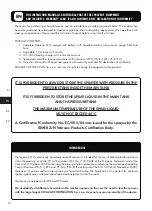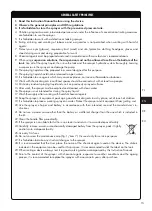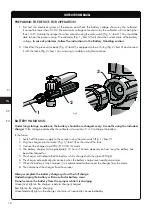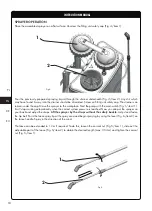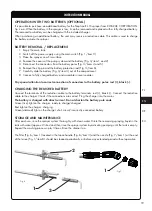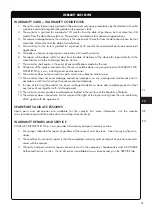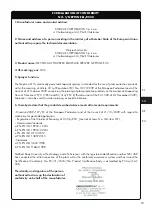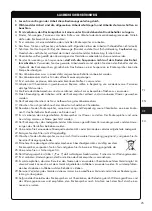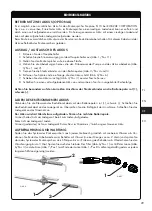
INSTRUCTION MANUAL
The sprayer should be stored
WITHOUT PRESSURE IN THE PRESSURE TANK
at +5
°
C to +35
°
C, in shaded
and dry places, away from heaters and out of reach of children. The adjustable lance can be mounted horizon-
tally in the holder on top of the sprayer (Fig. 1/item 12). The device may be transported holding it by the straps
(Fig. 1/item 2) or by the transport handle on top of the device (Fig. 1/item 6).
De-pressurising the pressure tank:
1. Switch off the power supply using the main switch (Fig. 1/item 11).
2. Point the tip of the lance at the previously sprayed surface.
3. Press the lever (Fig. 6/item 2) and start spraying.
4. Continue spraying until no spraying liquid or pressure is emitted from the lance tip.
The moving parts and seals should be periodically lubricated with silicone oil (Fig. 8a/item 1, 2 and
3, Fig. 8b/item 1), O-ring under the filling unit safety cap (Fig. 1/item 3). Oil included in the set.
RESIDUAL RISK
Although KWAZAR CORPORATION Sp. z o.o. assumes the responsibility for the device design and structure
in order to eliminate hazards, some risks ensuing during operation are inevitable. Residual risk results from the
erroneous behaviour of the operator.
The following prohibited actions cause the highest level of risk:
- not adhering to the safety rules described in this Instruction Manual,
- operating the device against the intended use described in this Instruction Manual;
- introducing arbitrary modifications.
When specifying the residual risks the product is assumed to be a device which was designed and manufactured
state-of-the-art in the year of its manufacture.
HAZARDS
Due to being a pressure-operated device, the sprayer poses the following additional hazards:
1. damage to soft tissue caused by the spraying liquid jet,
2. spraying liquid burns,
3. spraying fluid poisoning.
20
1
2
3
1
RU
EN
PL
DE
Fig.8a
Fig.8b

